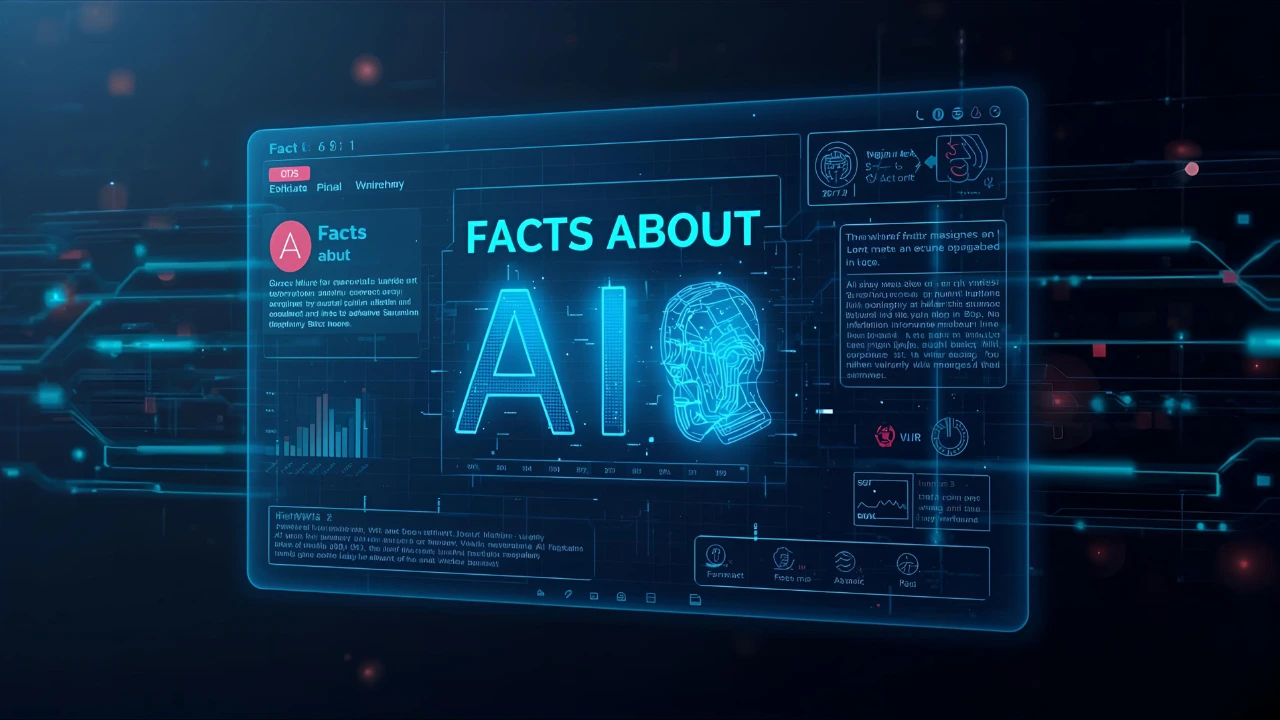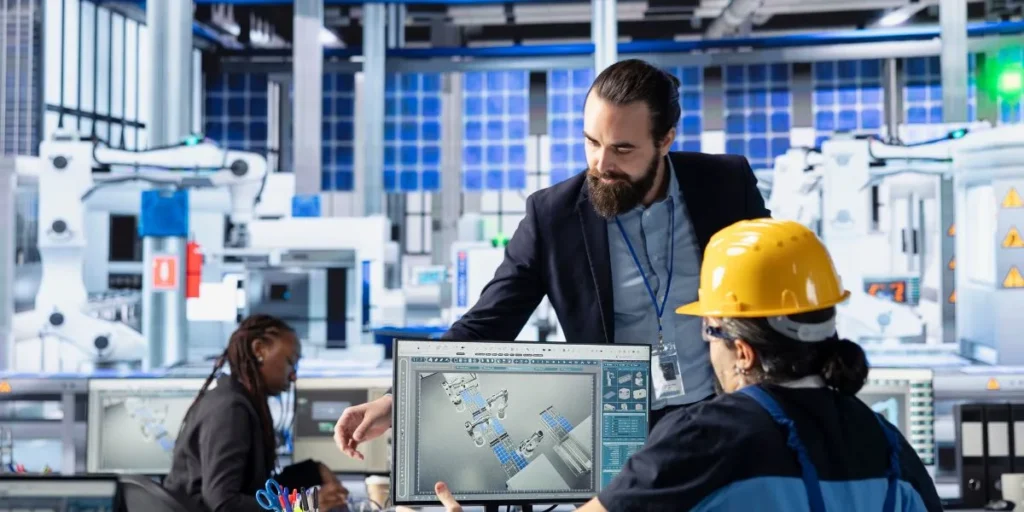Artificial Intelligence (AI) became one of the most revolutionary technologies in the 21st century, which transforms industries, changes the way we work, and produces a fundamental change in our daily lives. AI has been a hidden yet very strong powerhouse that propels modern society forward, as the smartphones we carry in our pockets, as well as the recommendation algorithms that indicate what we should watch next. Any person who wants to navigate a world that has become more digital must understand the facts about AI.
This analytical research of AI facts will bring you into the exciting realm of artificial intelligence, its modest origins, and its present abilities and possibilities. We are going to discuss the functioning of AI, its usage in various industries, the threats it poses, and the possibilities it brings. Regardless of whether you are a technology enthusiast, a business person,/or you are just someone who wonders what the digital revolution that we are experiencing around us is, these facts about AI will give you highly informative information about one of the most important technological advances in our time.
Fact 1: AI Has Ancient Philosophical Roots Dating Back to Antiquity
The idea of intelligent life forms that are not people is thousands of years older than modern technology. Talis was a huge bronze automaton that guarded Crete and was described in ancient Greek mythology and Hephaestus had golden servants to help him. These tales are an indication of a long-held interest among humanity in developing intelligent machines.
The system of formal logic that was created by Aristotle in the 4th century BCE provided a foundation for computational thinking. In Islamic medieval times, such as Al-Jazari, programmable automatons were designed, and the inventors of the European Renaissance created mechanical marvels that mimicked life. Such a rich philosophical and mythological history shows that the need to develop artificial intelligence is not only a contemporary dream, but it is one of the basic human desires that have existed and will exist in all cultures and epochs.
Fact 2: Machine Learning Requires Massive Amounts of Data to Function Effectively
Contemporary AI systems, and especially machine learning, are incredibly data hungry. To train a language model (such as GPT), it takes billions of text samples, and image recognition systems require millions of labeled photographs before they can reach high accuracy. This dependency on data brings about opportunities and challenges.
Firms that have access to vast data are advantaged, and this is a cause for worry about monopolies with data. End-of-the-line performance of AI is directly associated with the quality of training data- biased or poor quality data generate biased or weak AI systems. The privacy issue arises in data collection, whereby personal information will be a valuable resource in developing AI. This fact finds expression in the saying that data is the new oil, where information has turned into a valuable asset that fuels the AI revolution and economic value.
Fact 3: AI Currently Operates Through Narrow Intelligence, Not General Intelligence
The current AIs can perform certain tasks well, but do not emulate the wide-ranging, versatile intelligence of human beings. This is a limitation, called narrow or weak AI, such that a chess-playing AI would not be able to drive a car, and a language translation system would not be able to diagnose a disease. The different applications of AI have their own domain-specific training and programmes. This specialization is capable of amazing performance in specific domains. AI has now surpassed world champions in complex games, detects cancers in a medical scan with superhuman precision, and has been writing remarkably human text.
Nevertheless, these systems are not able to cross-domainally transfer knowledge or be able to adapt to totally new circumstances without large-scale retraining. The Artificial General Intelligence (AGI) is the search for the one that would be able to match the human cognitive flexibility in every aspect, which is not here yet, and may require decades of research.
Visit our website to know more about our company AI Peak Flow.
Fact 4: Neural Networks Are Inspired by the Human Brain’s Architecture
The basis of modern AI is neural networks, computational systems whose structure is not that closely important as the human brain. Similar to the way that biological neurons establish a network and pass signals, artificial neural networks are composed of interconnected nodes that process and pass information. Such networks learn by regulating the strengths of the connections among nodes, just as synapses in the brain become stronger or weaker as a result of experience.
Deep learning, a method that uses neural networks composed of many layers, and with the capability to automatically detect complex trends in data, is the revolution of AI potentials. This neuromorphic method has resulted in advances in computer vision, natural language processing, as well as game-playing. But artificial neural networks are direct simplifications of biological systems, and do not share most of the complex capabilities of the brain, such as consciousness, emotions, and real understanding.
Fact 5: AI Is Transforming Healthcare Through Diagnostic and Treatment Innovations
One of the most likely uses of AI applications is healthcare, and the systems already demonstrated impressive diagnostic capabilities. AI has the ability to analyze medical images with precision that is in most applications more precise than human specialists, finding early-stage cancer, identifying eye problems, and viewing through small anomalies in X-rays and MRIs and CT scans. Once a decades-long and billion-dollar process, drug discovery is becoming faster using AI systems capable of forecasting the behavior of molecules and discovering promising compounds.
The personalized medicine is also utilizing the power of AI to read the genetic data, medical history, and lifestyle habits and prescribe certain treatment. Robotic surgery technology has never been as accurate and AI-controlling health trackers can predict health crises before they happen. Such applications are bound to enhance better healthcare, cost-effectiveness, and quality medical care will be more accessible to people across the globe.
Fact 6: Autonomous Vehicles Represent One of AI’s Most Complex Engineering Challenges
Self-driving cars demonstrate the potential of AI and characterize its existing shortcomings. These cars will need to take data captured by several sensors, such as cameras, radar, lidar, and GPS, to generate a real-time perception of surroundings. The AI systems should detect and follow pedestrians, vehicles, road signs, traffic lights, and millions of other objects on the road, predicting their actions. The conditions of weather, abnormal road conditions, and other erratic human behaviors add more complexity.
Modern autonomous vehicles are at various degrees of autonomy, including driver assistance systems and fully autonomous systems in controlled settings. It is not only a technological challenge, but also a legal, ethical, and social challenge regarding the matter of liability, job displacement, and social acceptance. Even after billions of dollars have been spent, the dream of having a reliable full autonomy under all driving conditions has still eluded us, and it continues to push AI capabilities to their limits.
Fact 7: AI Raises Significant Ethical Concerns About Bias, Privacy, and Fairness
Fairness and bias have become more and more important as more and more systems based on AI are deployed in the decision-making process. The AI systems have the potential of perpetuating or even increasing the biases that exist in society in the training data, resulting in discrimination in the hiring, lending, criminal justice, and other important sectors. Biometrics have demonstrated lower accuracy in facial recognition of some groups of people, and the algorithms used in hiring are biased against a particular gender.
The issue of privacy is problematic because AI technology gathers and processes a lot of individual information, and the process is not always carried out with prior permission or clear knowledge of how this information is utilized. It is hard to refute or disagree with the decisions of black box AI systems as they are hard to understand and interpret, which casts doubt upon the idea of accountability and transparency. These ethical dilemmas can be solved by multidisciplinary staff, strategic data management, algorithmic auditing, and regulatory policies, which will make sure that AI is of benefit to all individuals in society.
Fact 8: AI Is Creating New Job Categories While Displacing Others
Effects of AI on employment are multifaceted and mixed, and at the same time, they kill traditional jobs, and provide new opportunities. In all industries, from manufacturing to customer service, automation poses the threat of routine and predictable tasks. Nevertheless, there are also new positions created by AI, which include AI specialists, data scientists, machine learning engineers, and AI ethics consultants. The number of jobs that are being augmented, not substituted, is many, and AI is a formidable tool that empowers human abilities.
AI is used by teachers to create individual learning, doctors to aid diagnosis, and artists to work on creative tools. The most critical issue is how to make sure that workers will be able to cope with these changes by implementing reskilling and education programs. Government and organizations need to invest in training programs that can assist individuals to shift to AI-enhanced work settings and tackle the social effects of technological unemployment.
Fact 9: AI Systems Can Now Generate Creative Content Rivaling Human Artists
The new developments in generative AI have created tools with the capability to generate original artistic works that undermine the classical concept of creativity. Now AI can compose music, write poetry and stories, paint pictures, and even design some realistic videos. Such systems are trained on huge amounts of human-generated content and are capable of rearranging these existing components in new ways. DALL-E produces images based on text prompts, GPTs generate coherent stories and articles, and AI composers can write symphonies of different styles.
This ability poses some interesting questions concerning the nature of creativity, authorship, and intellectual property. Although the results of AI-generated content have the power to be amazing, there have been arguments on whether the systems do grasp what they create or if it is just using patterns without necessarily understanding what they are doing. The technology is transforming the creative industries and compelling society to re-evaluate what it takes to be creative in the era of artificial intelligence.
Fact 10: The Future of AI Includes Potential Risks and Extraordinary Benefits
The history of AI development is marked by both the opportunities that have never been witnessed before and the threats that will deeply define the future of human beings, both in its prosperity and its very existence, so this is perhaps the most important of all the facts about AI as far as long-term prosperity and survival of humanity are concerned. The positive consequences of further development of AI truly are phenomenal and capable of helping humankind to overcome some of the most profound problems and discover new horizons of human prosperity and success.
One of the fields where AI is expected to offer transformative solutions in terms of climate change mitigation is optimized energy systems, management of smart grids, precision agriculture, and the discovery of materials. AI systems may be used to optimize the distribution of renewable energies, weather forecasting to enable better planning of resources, new carbon capture technologies, and more efficient transportation systems that will significantly lower emissions of greenhouse gases.
Conclusion
All these facts about AI show that it is a revolution and evolutionary technology that draws upon centuries of human inquisitiveness and intellectual accomplishment, and challenges the limits of the unimaginable. Since its ancient philosophical, mythological, and early logical roots, though, as well as its present-day limited uses and its phenomenal potential, AI is one of the most ambitious and consequential projects ever attempted by humanity: the systematic production of intelligence itself.
The information introduced in this exploration shows that AI is not a singular technology but a broad and fast changing area that includes not only a simple automation systems which follow rules but also incredibly sophisticated neural networks that can produce works of art, diagnose a disease, and have an elaborate discussion that is sometimes hard to tell the difference between the interaction of the machines and human communication. This variety implies that when one wants to understand AI, it is important to consider both its weaknesses and its impressive success in various fields.




